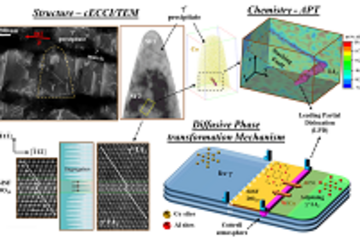All genres
1.
Journal Article
Surface X-ray diffraction at beamline BL 9 of Delta. Journal of Synchrotron Radiation 13, pp. 8 - 13 (2006)
2.
Journal Article
The structure and reactivity of chemically modified reactive metal surfaces. Bulletin of Electrochemistry 8, p. 8 - 8 (1992)
3.
Journal Article
Anbindungsverhalten organischer Monomere auf Eisenoberflächen und Korrosion der durch die Anbindung chemisch modifizierten Oberflächen. Werkstoffe und Korrosion 42 (1), pp. 19 - 34 (1991)
4.
Journal Article
Electrochemical and Electron Spectroscopic Investigations of Iron Surfaces Modified with Thiols. Surface and Interface Analysis 16, 1-12, pp. 278 - 282 (1990)
5.
Journal Article
Interaction between S-organic compounds and iron surfaces. Fresenius’ Zeitschrift für Analytische Chemie 333 (4-5), p. 545 (1989)
6.
Journal Article
Electron Spectroscopic and Electrochemical Investigations of Chemically Modified Iron Surfaces. Berichte Bunsengesellschaft Physikalische Chemie 92 (11), pp. 1335 - 1341 (1988)
7.
Conference Paper
Stability and Reactivity of Chemically Modified Iron Surfaces. In: European Conference on Advanced Materials and Processes Proc.. European Conference on Advanced Materials and Processes, Aachen, Germany. (1989)











